W A R A ND P E A C E — THE 1 9 4 0 s A ND 1 9 5 0 s
On the cover
FRONT: (Page 131) Peace brings smiles to San Diegans, both civilian and military, young and old.

SAN DIEGO HISTORY CENTER, UNION-TRIBUNE COLLECTION (#UT 8243-13)
BACK: (Page 52) Bankers tour the First National Bank vault in August 1954. Outside the vault (from left) are Helen Polk, Virginia Holz, Irene H. Lee, and Jean Morton.
SAN DIEGO HISTORY CENTER, UNION-TRIBUNE COLLECTION (#UT84:27413.1)
Foreword
This year, 2019, is San Diego’s 250th anniversary of the beginning of European colonization of California. As seen in the 2018 San Diego Memories I book, this area changed radically up through 1939. This book picks up in 1940 and takes you through the next two decades of war and peace.
The National Geographic issue of January 1942 went to press before the attack on Pearl Harbor changed everything. But coincidentally, a story by Frederick Simplich, “San Diego Can’t Believe It,” appeared that month that illustrated what the “blitz boom” did to San Diego. An advertisement, evidently from the city’s tourism bureau, turned the crisis of congestion into a promotional pitch: “See San Diego this year! … You have a ringside seat for the greatest drama of our time! Come!”
I unearthed wasn’t about a happy home life but my mother’s interest in finding recipes from other countries and showing how easy it is to borrow from another land. This book couldn’t have come together without the help of Chris Travers and Carol Myers at the San Diego History Center and Merrie Monteagudo at The San Diego Union-Tribune. Chris and Carol tracked down the negatives, assignment sheets, and obscure facts behind the images. Merrie, the Union-Tribune ’s archivist, gathered the best front pages of the two decades. We tried to identify as many individuals pictured as possible. One final aha moment came when we secured the identities of several Padres baseball players—thanks to baseball historian Bill Swank.
Copyright © 2019 by The San Diego Union-Tribune All Rights Reserved
ISBN: 978-1-59725-855-5
Individual images in this book are copyright of The San Diego Union-Tribune, San Diego History Center, and other contributors. Used with permission.
No part of this book may be reproduced, stored in a retrieval system or transmitted in any form or by any means, electronic, mechanical, photocopying, recording or otherwise, without prior written permission of the copyright owner or the publisher.
Published by Pediment Publishing, a division of The Pediment Group, Inc. www.pediment.com
Printed in the United States of America.
Combing through thousands of photos, it was the stories behind the photos that illuminated the period even more concretely. These connections were made possible only by access to the digital archives of The San Diego Union . Type in a few keywords and up pops the story that goes with the photograph.
For me, this book project was a trip back to distant childhood memories… Shelter Island was just emerging from the bay bottom. Kids at my Loma Portal Elementary School celebrated United Nations Day. We all stood in line for polio shots. For the Community Memories chapter, I shared a photo of my mother baking cookies (page 170). The related newspaper article
But some identities remained elusive. If you see yourself or know somebody pictured but unidentified, please let me or the History Center know—rmshowley@yahoo.com, collections@sandiegohistory.org.
I also want to thank Union-Tribune Publisher and Editor Jeff Light, who tasked me with putting together these San Diego Memories books, just as I was retiring in March 2018 after forty-four years at the paper. It’s been a journey of discovery and, hoping that you like these volumes, we look forward to continuing the story in years to come.
— Roger Showley
2 SAN DIEGO MEMORIES II

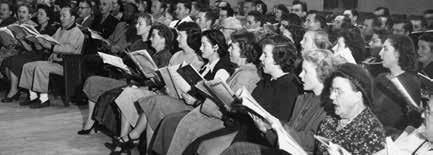

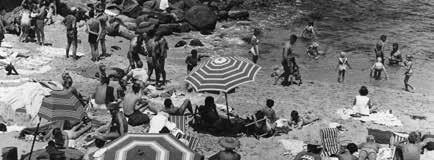
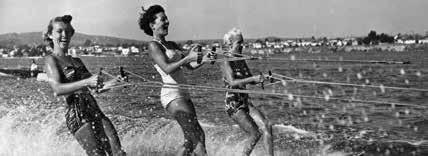

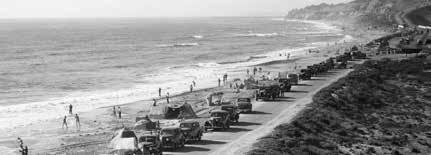
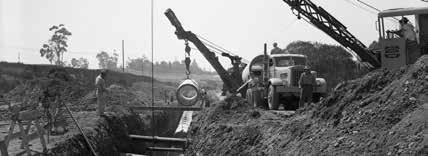
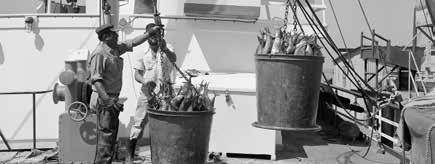

INTRODUCTION 3 Table of Contents City Alive ...................................................... 11 Military ........................................................ 21 Commerce and Industry ................................ 53 Public Service .............................................. 69 Views and Street Scenes ............................... 91 Transportation ............................................ 103 Maritime .................................................... 115 Recreation, Celebration and Arts ................. 125 Community Memories ................................. 163
Chapter
introductions and
captions by Roger Showley
San Diego Through the Years
1940
Census for San Diego County, 289,348; city of San Diego, 203,321
1940
U.S. leases 750 acres for Camp Callan on Torrey Pines Mesa
1940
Rohr Aircraft incorporated (opens Chula Vista plant in 1941)

1941
Sidney Loman organizes first local black Boy Scout troop
1941
Japanese attack on Pearl Harbor leads to declaration of war, appearance of Japanese submarines off San Diego coast a few weeks later, nightly blackouts, and Navy takeover of Balboa Park buildings to form Camp Kidd
1941
First USO club opens
1940
City Harbor Commission installs first local parking meters
1940
3,000-home Linda Vista wartime housing project launched
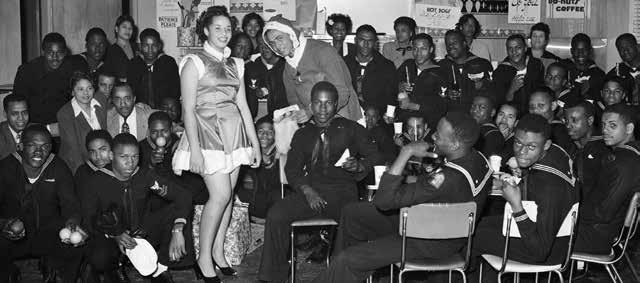
1941
University of California establishes war research division to run underwater research lab in Point Loma
1941
San Diego State basketball team wins first national championship
1941
Robert O. Peterson opens first Oscar’s restaurant, and in 1951, the first Jack In the Box

4 SAN DIEGO MEMORIES II
1942
U.S. buys 125,000 acres for $4.2 million for Camp Pendleton Marine Base (President Franklin D. Roosevelt attends dedication in September)
1942
1942
U.S. and Mexico sign agreement for seasonal agricultural workers (4.6 million through 1964)
1942
First J. C. Penney store opens locally, in North Park (closes 1986)
1944
Looming water shortages prompt federal emergency funds to build aqueduct for Colorado River (completed 1947)

1946
Civic Light Opera (Star-Light) holds first show, The Mikado, at the San Diego Zoo’s Wegeforth Bowl
1946
Civic philanthropist George W. Marston dies at 95
About 1,100 Japanese Americans relocated from San Diego, eventually to Poston internment camp
1942
Local tuna fleet vessels offered for war duty

1943
Convair created by merger of Consolidated Aircraft and Vultee Aircraft
1944
San Diego County Water Authority created
1946
City voters approve $2 million bonds for Mission Bay Park (dedicated 1949 during Fiestabahia)
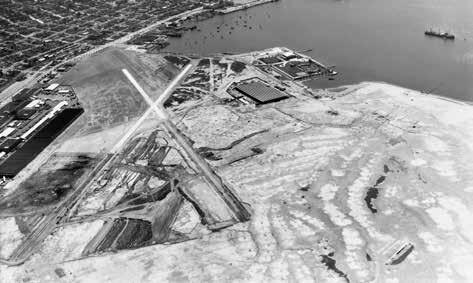
1946
Deadliest commercial flight to date kills 27 on an American Airlines flight just east of San Diego
SAN
THROUGH THE YEARS 5
DIEGO
PHOTOS
COURTESY OF THE SAN DIEGO UNION-TRIBUNE AND SAN DIEGO HISTORY CENTER
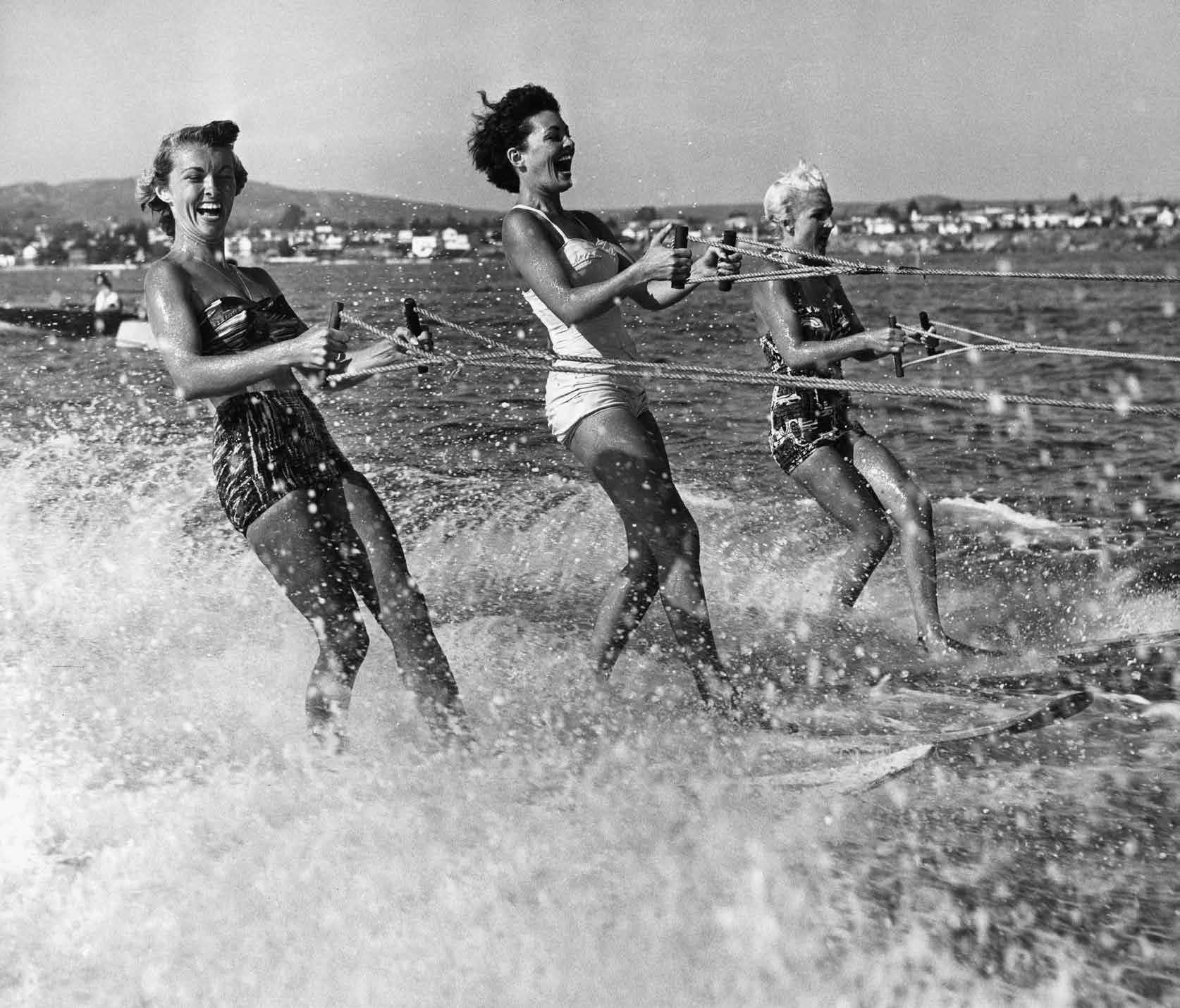
Recreation, Celebration and Arts
San Diego was becoming America’s playground as peacetime returned in 1945. That very year voters approved a $2 million bond issue to begin reclamation of Mission Bay for aquatic sports, hotels, and other commercial uses. The project, a concept since the turn of the twentieth century, was combined with flood control measures on the San Diego River to divert runoff from Mission Bay and San Diego Bay out into the ocean. “This is a postwar project for which the groundwork should be started now,” said Mayor Harley Knox. When Mission Bay Park opened in 1949, he called it “the playground of the American people.”
Professional boxing, golf, swimming, sailing, and tennis had their champions. The minor league Padres won their first pennant in 1954. Hollywood stars and local horseracing enthusiasts flocked to the Del Mar Racetrack. Amateur sports included waterskiing, surfing, and soaring in gliders off Torrey Pines cliffs. Note the picture of kids on page 143 competing in a marbles tournament at Adams Elementary School in Normal Heights in 1952.

In the arts, San Diego native Gregory Peck, joined by other Hollywood royalty,
launched the La Jolla Playhouse at La Jolla High School in 1947. Two years later the Old Globe Theatre, a venue built for the 1935–36 California Pacific International Exposition in Balboa Park, held its first Shakespeare Festival. Also in the park, free weekly organ concerts resumed at the Spreckels Organ Pavilion and the expo’s Ford Bowl hosted Starlight musicals and San Diego Symphony summer concerts.
The Art Center in La Jolla, dedicated to contemporary art, opened in 1941 in the former home of Ellen Browning Scripps. (It later became the Museum of Contemporary Art San Diego.) The Fine Arts Gallery (later renamed the San Diego Museum of Art) reopened, along with other museums that had been repurposed for military uses during the war.
But art of a different sort flowed out of the brain of Theodor S. Geisel, better known as Dr. Seuss. Once he’d moved to La Jolla in 1948, he wrote his most famous works from “The Tower,” the home he built on the western slopes of Mount Soledad.
San Diego attracted a number of filmmakers looking for scenic landscapes and Navy props in the 1940s and ’50s. Among 84 films listed in a compilation in the Journal of
San Diego History was Citizen Kane (1941) in which Balboa Park is the stand-in for Xanadu. Sands of Iwo Jima (1949), filmed at Camp Pendleton, earned John Wayne his first Oscar nomination. Some Like It Hot (1959) depicted the Hotel del Coronado as a Florida resort, but Marilyn Monroe was the real draw for hundreds of onlookers while filming on the beach in September 1958. Celebrations and fiestas proliferated in the postwar years from military parades down Broadway to the Mother Goose Parade in El Cajon. San Diego toyed with holding a third exposition in 1953, the “World’s Progress Exposition.” Instead there was the Fiestabahia that celebrated the opening of Mission Bay Park in 1949 and the Fiesta del Pacifico from 1956 to 1959, where composer Meredith “The Music Man” Willson oversaw his “California Story” musical extravaganza at Balboa Stadium. In June 1946 the San Diego County Fair resumed at the Del Mar fairgrounds. Don Diego, the official ambassador, was portrayed by actor Tommy Hernandez from 1947 until his death in 1984. Another local notable, Raquel Tejada, was crowned Fairest of the Fair in 1958 and went on to stardom as Raquel Welch.
RECREATION, CELEBRATION AND ARTS 125 CHAPTER EIGHT
OPPOSITE: Mission Bay offered a new, safe, and fun place to water ski, as seen in this mid-1950s photo. SAN DIEGO HISTORY CENTER (#OP15746-2653)
ABOVE: An estimated 100,000 people attended Armed Services Day on May 19, 1951, in downtown San Diego. A parade of 10,000 military personnel marched down Broadway and special displays of military equipment were set up near the Coast Guard air station on Harbor Drive. UNION-TRIBUNE

OPPOSITE: Sgt. Joaquin Isaac (left), 20, of San Antonio, and Pfc. Gale Jones, 19, of Hastings, Nebraska, enjoy a free dinner surrounded by servers (from left) Ruth Geishirt, Margine Stortz, Thelma Harbaugh, Pat Severson, and Maye Perry. The two servicemen were among 1,300 Marines who returned from the Korean War aboard the transport Sgt. Sylvester Antolak on April 29, 1951. UNION-TRIBUNE
RIGHT: Hanging onto a ski tow on March 4, 1951, in the Cuyamaca Mountains are Mrs. Robert Carlson, Miss Jerry Hansehmann, Mrs. Jack Benson, and Mrs. John Thomas, all of San Diego. UNION-TRIBUNE
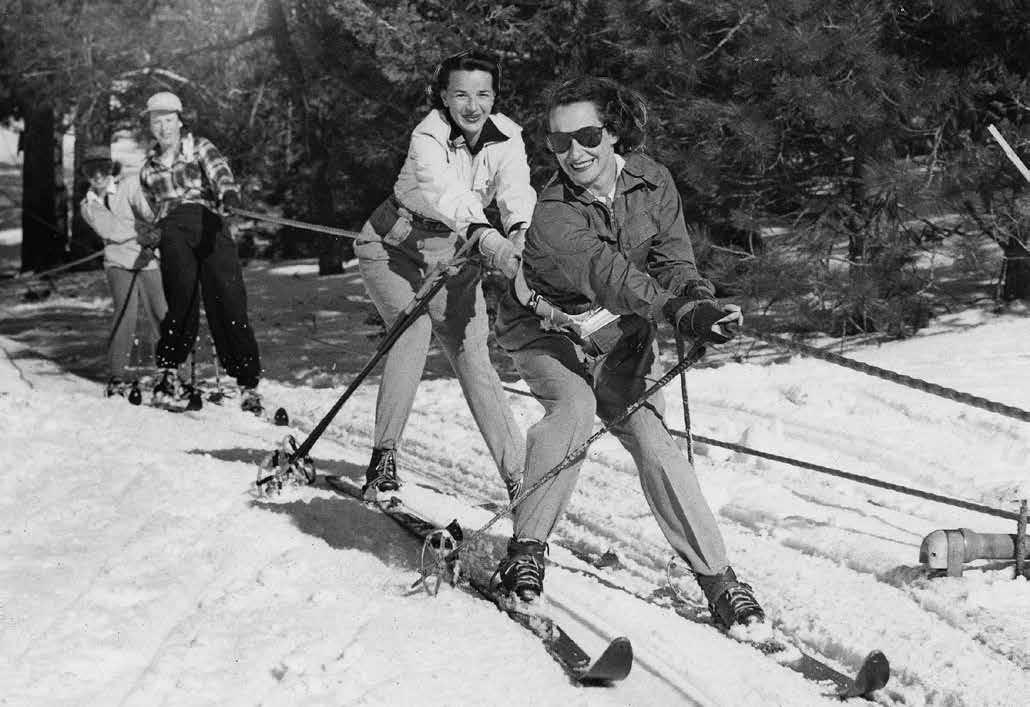
138 SAN DIEGO MEMORIES II
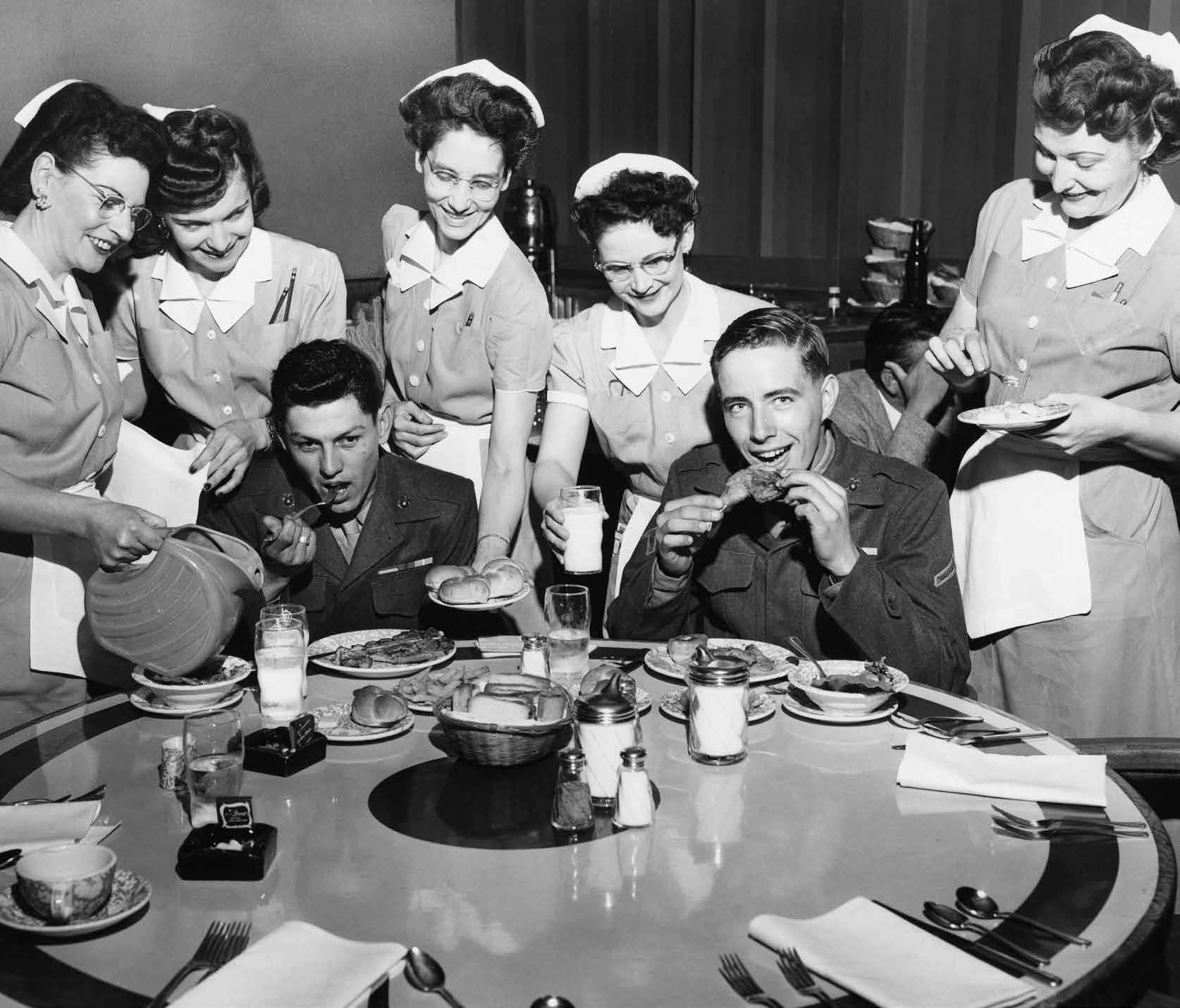
ABOVE: Harbor Days queens ride in parade on July 22, 1951, a Jubilee of Tuna. An estimated 40,000 gathered at the Embarcadero, where the Junior Chamber of Commerce handed out 100,000 sandwiches, Navy jets performed a flyover, and a street dance took place at the Civic Center (County Administration Center).
UNION-TRIBUNE
ABOVE RIGHT: San Diego tennis legend Maureen “Little Mo” Connolly demonstrates her strategy of blasting from the back of the court in 1951 when she was 17. That year she won the U.S. national title, and followed up with the first women’s Grand Slam, taking national championships in the U.S., Britain, France, and Australia in 1953. Her career was cut short in 1954 by injuries suffered in a traffic accident (while she was riding a horse on Friars Road). She died of cancer in 1969 at age 34.
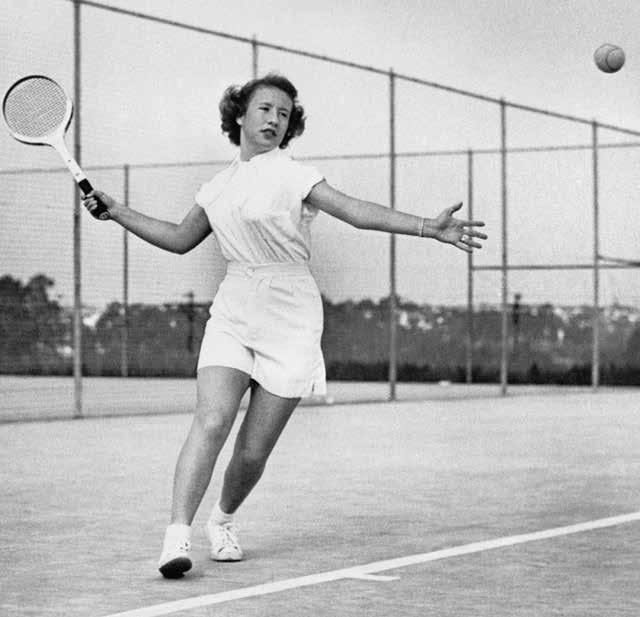 SAN
SAN
DIEGO HISTORY CENTER (#OP 15746)
RIGHT: Republican presidential candidate Dwight D. Eisenhower campaigns in San Diego on October 9, 1952. Among his remarks, he said San Diego’s border location demonstrates “that warm unity of friendship protects better than tanks and planes and guns and ships.” He won in a landslide against Illinois Governor Adlai E. Stevenson. UNION-TRIBUNE
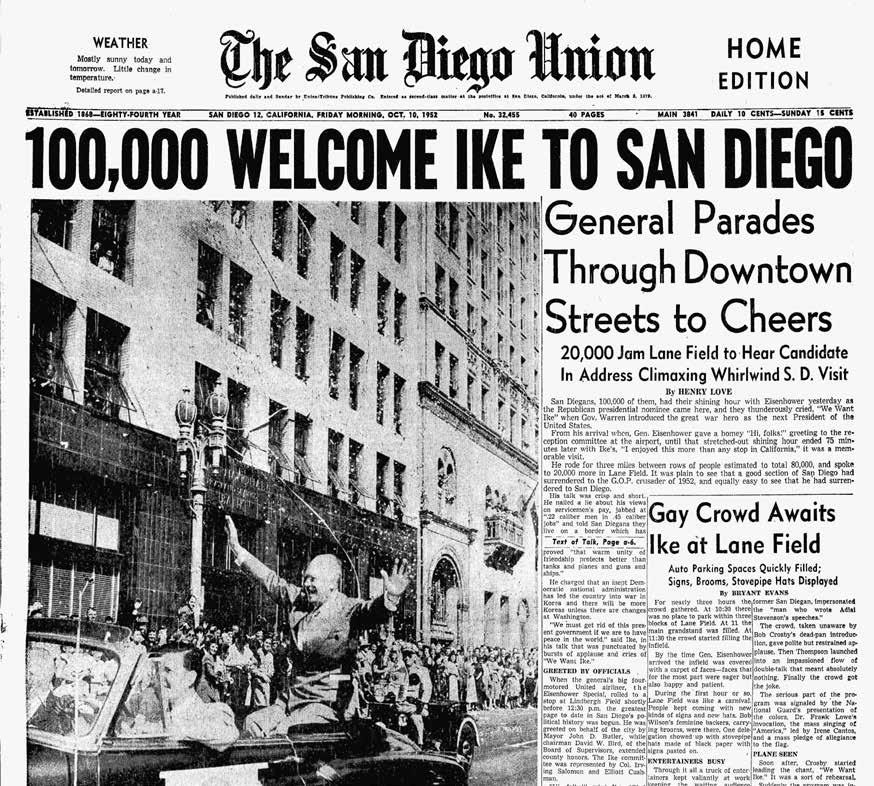
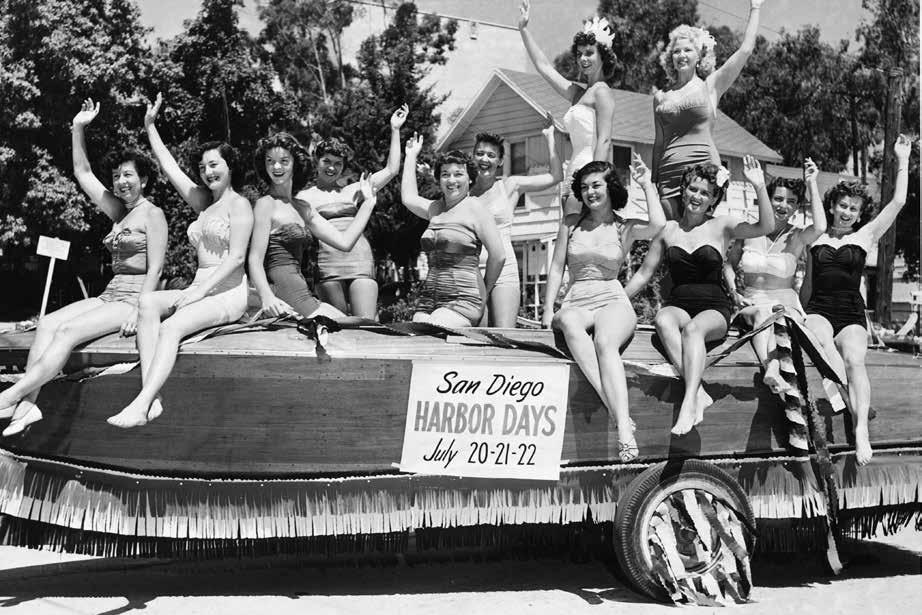
140 SAN DIEGO MEMORIES II
LEFT:
SAN DIEGO HISTORY CENTER, UNION-TRIBUNE COLLECTION (#UT84:3302.5-6)
BELOW: Joe Louis, the former heavyweight boxing champ, broke the PGA’s color barrier at the San Diego Open in January 1952 at La Jolla Country Club, a month after he retired from the ring.

SAN DIEGO HISTORY CENTER, UNION-TRIBUNE COLLECTION (#UT84:33302.5-6),
 Gladys Welch (left) and Kay Kissinger pose on a San Diego fireboat water pump at the Harbor Days festival in August 1952.
PHOTO BY STANLEY GRIFFIN
Gladys Welch (left) and Kay Kissinger pose on a San Diego fireboat water pump at the Harbor Days festival in August 1952.
PHOTO BY STANLEY GRIFFIN

ABOVE: The front page picture shows pitcher Bob Kerrigan carried off the field on the shoulders of his teammates as the Padres beat the Hollywood Stars, 7-2, in the championship playoff in their first pennant on September 13, 1954. UNION-TRIBUNE
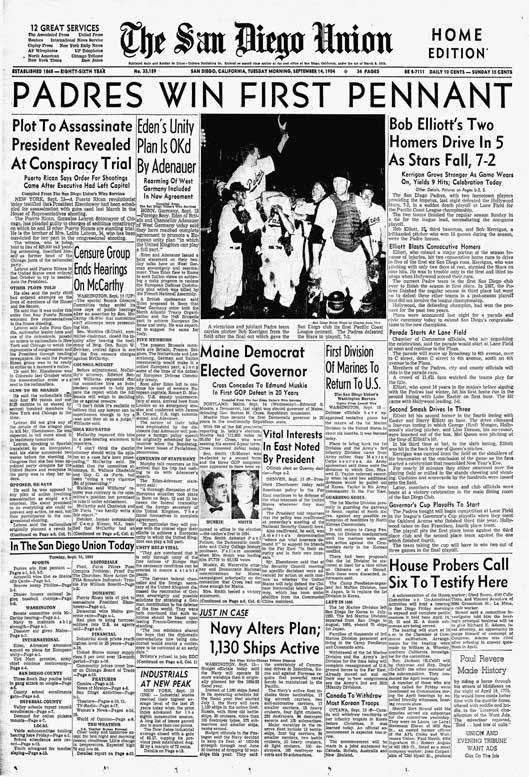
ABOVE LEFT: San Diego Mayor John Butler joins crowds at the opening of the Clairemont Quad shopping center, “San Diego’s great new ‘city of stores,’” (now Clairemont Square) in October 1954.
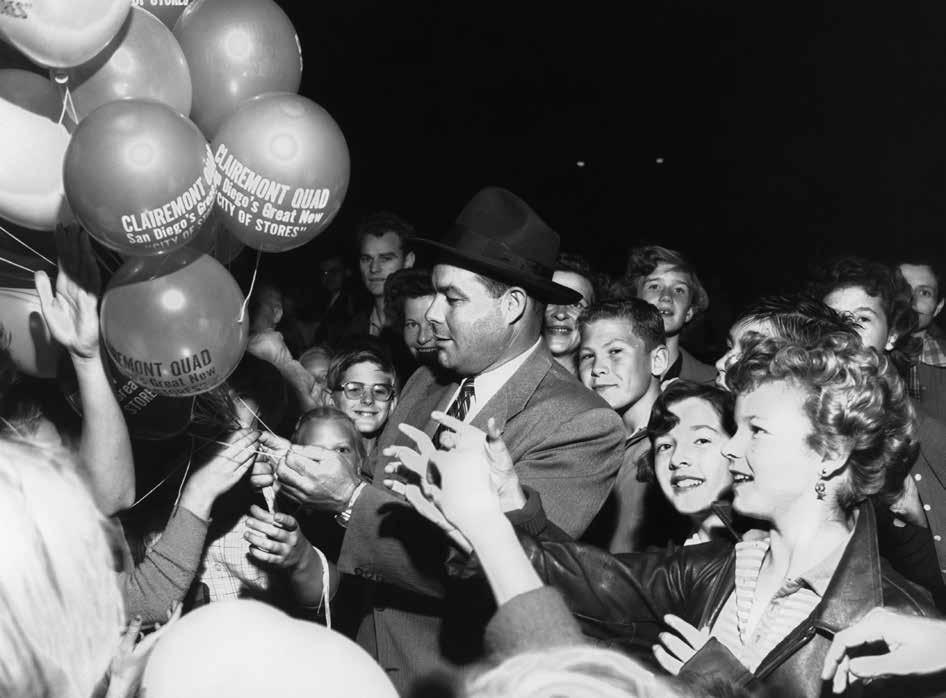
SAN DIEGO HISTORY CENTER, UNION-TRIBUNE COLLECTION (#UT84: 29906.2)
OPPOSITE: Gary Wilson (center), 14, and other newspaperboys for The San Diego Union and Evening Tribune lunch with Don Diego (Tommy Hernandez) and the Fairest of the Fair, Gay Cowle, at the San Diego County Fair on June 26, 1955. UNION-TRIBUNE, PHOTO BY CHARLES SICK
LEFT: An estimated 35,000 turned out for a noontime victory parade up Broadway on September 14, 1954, the day after the Padres won the Pacific Coast League championship.
SAN DIEGO HISTORY CENTER, UNION-TRIBUNE COLLECTION (#UT84:34099-1)

RECREATION, CELEBRATION AND ARTS 147
ABOVE: Paul Primrose greets his daughter, Judy, 28, who won the women’s open class with a time of 28:58 at the Belmont Park Rough Water Swim on July 12, 1958.

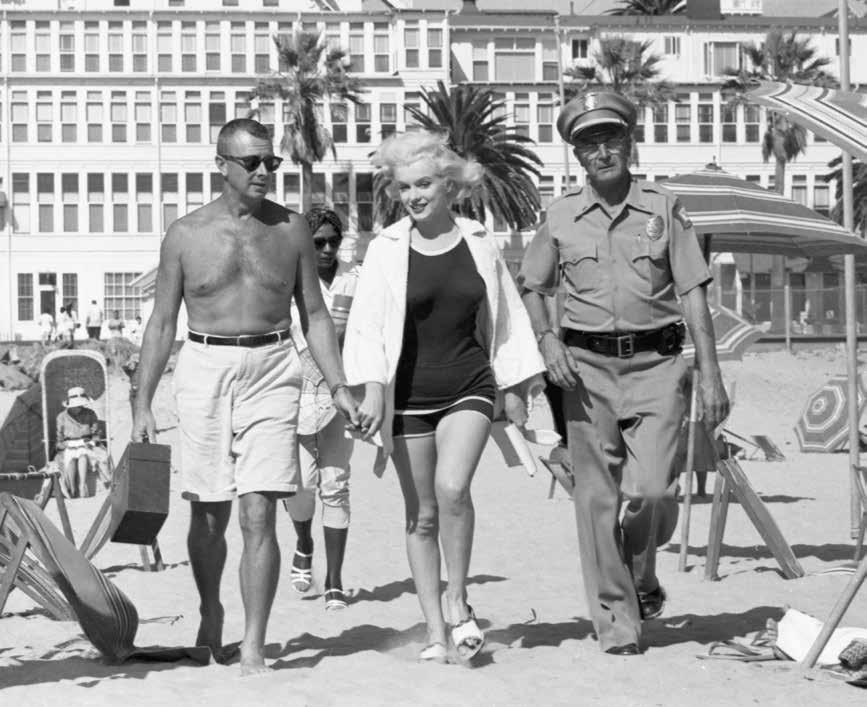
SAN DIEGO HISTORY CENTER, UNION-TRIBUNE COLLECTION (#UT85:6741)
ABOVE RIGHT: A San Diego Padres player, believed to be Ray Rippelmeyer, poses for three young fans, circa 1958, probably at Westgate Park in Mission Valley.
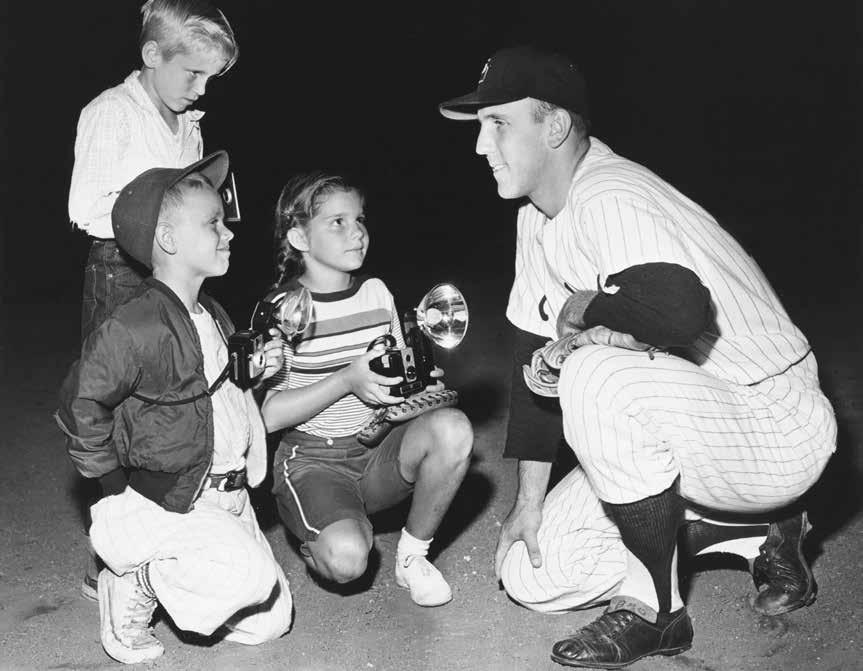
SAN DIEGO HISTORY CENTER (#OP15746-2640)
SAN DIEGO HISTORY CENTER, UNION-TRIBUNE COLLECTION, (#UT85:7883-39)
158 SAN DIEGO MEMORIES II
RIGHT: Marilyn Monroe and the cast and crew of Some Like It Hot took over the Hotel del Coronado for a film shoot for a few days in September 1958. Crowds watched the movie makers turn the hotel into a 1920s Florida resort. Released in 1959, it won one Academy Award and three Golden Globes.
ABOVE AND LEFT: Raquel Tejada, better known as Raquel Welch, rides in the 22nd annual North Park Toyland Parade (above) on December 7, 1958. In the previous summer she reigned as Fairest of the Fair (left) at the Del Mar Fair. Born in Chicago in 1940, she moved with her family to San Diego in 1942 and won her first beauty contest at age 14. She majored in drama at San Diego State, had a stint as a weather forecaster on KFMB-TV, and eventually became a movie star after the release of Fantastic Voyage in 1966.

ABOVE: SAN DIEGO HISTORY CENTER, UNION-TRIBUNE COLLECTION (#UT85:9534-1); LEFT: EVENING TRIBUNE PHOTO, JUNE 16, 1958)

RECREATION, CELEBRATION AND ARTS 159
ABOVE: The San Diego Padres, a Pacific Coast League minor team, played their first games in 8,268-seat Westgate Park in Mission Valley on April 29, 1958, after twenty-two years at Lane Field downtown. The Padres beat the Phoenix Giants in the doubleheader. C. Arnholt Smith, owner of Westgate-California Tuna and other businesses including the Padres, spent $1 million on the facility which San Diego Union sports editor Jack Murphy said surpassed the “comforts” of Yankee Stadium and Fenway Park. But the park lasted only ten seasons. The Padres moved to San Diego Stadium in 1968 and Westgate Park was demolished to make way for Fashion Valley mall, which opened in 1969.

SAN DIEGO HISTORY CENTER, UNION-TRIBUNE COLLECTION (#UT85:5384)
OPPOSITE: Former Padre (1936–37) and San Diego native Ted Williams signs autographs at Westgate Park on March 13, 1959, after an exhibition game between his Boston Red Sox and the Cleveland Indians. He was hitless but the Sox still won, 8-5. SAN DIEGO HISTORY CENTER, UNION-TRIBUNE COLLECTION (#UT85:A1221-2)
RIGHT: Walter Schirra Jr., one of America’s seven project Mercury astronauts, tries his hand at waterskiing in Mission Bay. Six of the seven Mercury astronauts were in San Diego in September 1959 to study operations of Convair’s Atlas rocket that was to take them into space. UNION-TRIBUNE

160 SAN DIEGO MEMORIES II
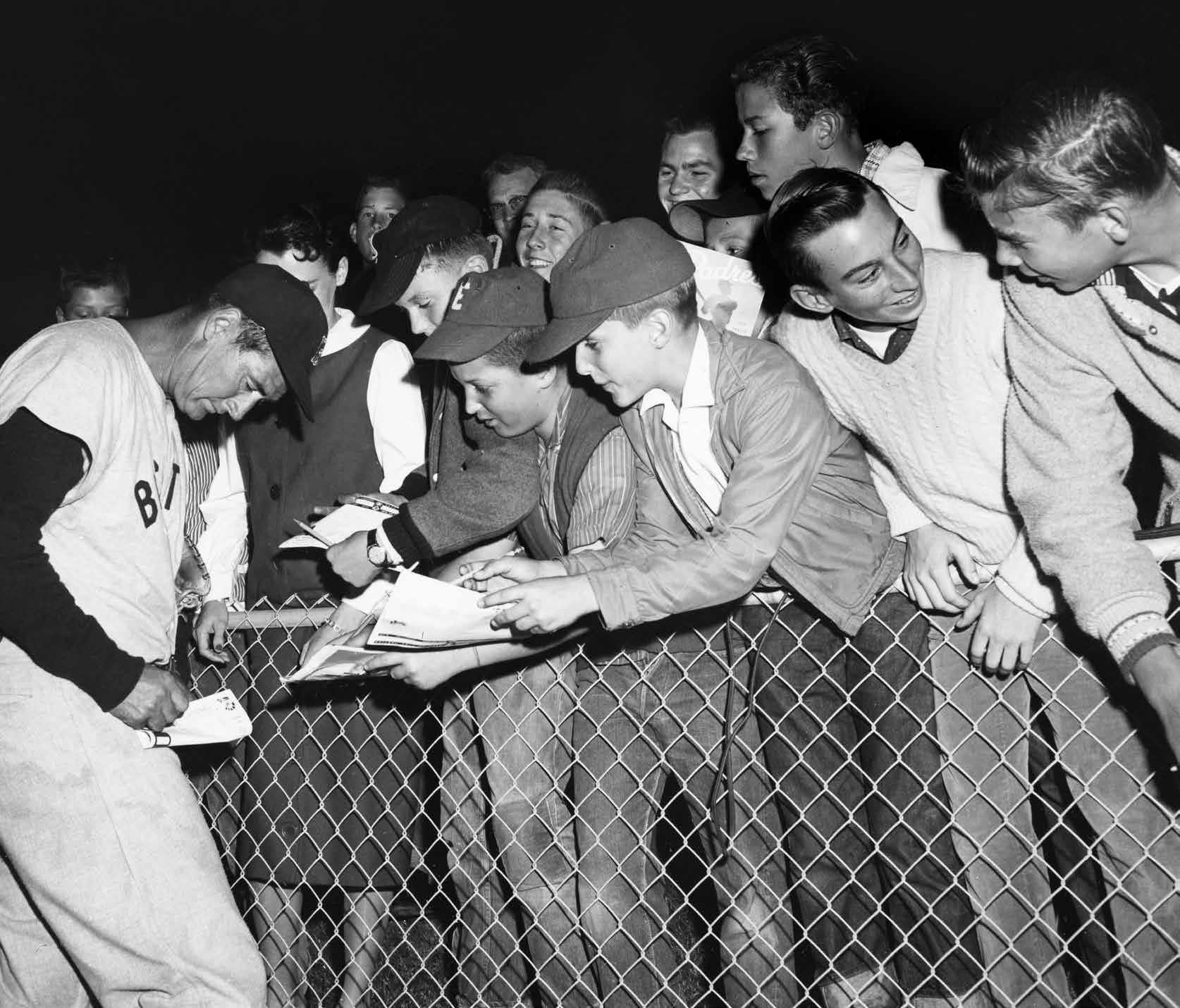

CHAPTER NINE
Community Memories
The 1940s and ’50s are decades within the living memories of many San Diegans today. Baby boomers born in those years were raised in a period of growing prosperity. Many lived in ranch-style suburban homes, wore Davy Crockett coonskin caps, twirled hula hoops, danced to rock-n-roll, and engaged in hotrod drag races on El Cajon Boulevard.

Families used low-cost cameras to record birthdays, vacations, and city scenes and some of their snapshots appear in this chapter. But as is typical of so many images, some of the key information is missing. Given the billions of images taken by smart phones today, future historians
would be grateful if you included the who, what, when, where, and why of your family photos. The San Diego History Center in Balboa Park is always on the lookout for photos and documents to tell the San Diego story. Contact them at sandiegohistory.org to share your history.
The same thing goes for San Diego’s news gatherers, who chronicle the proverbial first draft of history in their daily reporting. If you see something interesting, call your local newspaper. Meanwhile, become a discerning news consumer and seek the truth from a variety of reliable sources. The news isn’t “fake” because you don’t like it. It’s the unvarnished truth that should include
all sides of a controversy. The San Diego Union-Tribune is the local paper of record. Even they can’t report everything going on everyday and everywhere, its writers, editors, and photographers track what’s news—that is, what is new, important, interesting, entertaining, and disturbing. Buy a subscription, read it daily, and if you don’t like something, send a letter to the editor or comment online: sandiegouniontrib.com, (619) 299-3131.
Fifty years from now, events recorded today may end up in a book like this for your children and grandchildren to enjoy. That’s what history is for and you’re part of it.
COMMUNITY MEMORIES 163
OPPOSITE: San Diego Civic Chorus rehearsal at Alice Birney Elementary School. Carl Dewse was the choral conductor and Charlotte Dewse was the organist. The group performed at the Spreckels Organ Pavilion in Balboa Park during the Easter sunrise service in the 1950s. RON DEWSE
Los Gallos social club in Logan Heights in the 1950s. The club of primarily young Mexican American adults held dances, mentored other youth clubs in the neighborhood, and sponsored events for children in the community. Two members of the group became prominent in San Diego. Roberto Martinez went on to work for the American Friends Service Committee, a Quakersponsored human rights group, and was honored in New York for his work with Human Rights Watch. Salvador Roberto Torres became an acclaimed muralist and founder of the Centro Cultural de la Raza in Balboa Park.
 CONNIE ZUNIGA
CONNIE ZUNIGA
Third-grade class at Our Lady of Angels, 1944. Front row, fifth from left, is Connie Zuniga. CONNIE ZUNIGA

The Zuniga family on Easter Sunday, 1945. Left to right: Henry, Nellie (mother), Alfred, Ralph (father), Connie, Maria. The Zuniga family arrived in San Diego in 1919 and settled in Logan Heights. Ralph was a cement contractor whose name appears etched in sidewalks all over San Diego, including in front of Our Lady of Guadalupe’s Rectory on Kearney Avenue.
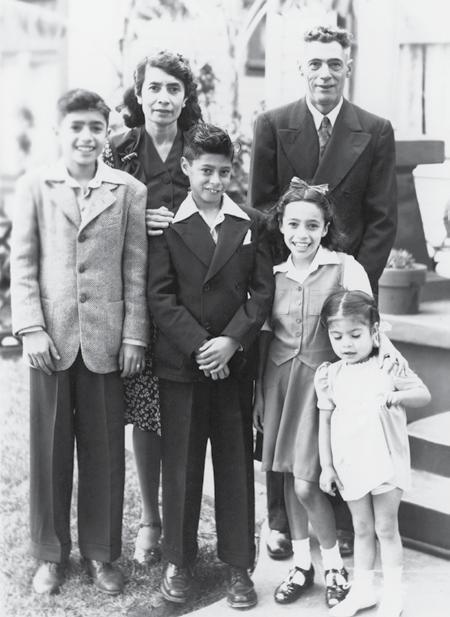 CONNIE ZUNIGA
CONNIE ZUNIGA
Dr. Jack Johnson Kimbrough, the first African American dentist to become a member of the San Diego County Dental Society. Kimbrough’s office, built in 1940 at 25th and K Streets, was the first African American dental and medical facility in San Diego. He was also a social activist, having organized sit-ins to desegregate hotels and restaurants throughout the city. Kimbrough Elementary School honors his many contributions to the neighborhood.
 CONNIE ZUNIGA
CONNIE ZUNIGA
164 SAN DIEGO MEMORIES II
CLOCKWISE FROM TOP LEFT:
CLOCKWISE FROM TOP LEFT:
Raul Garcia (center) and friends enjoying a summer afternoon at Mission Bay, August 1955. CONNOR ADAMS
Viola Andrade with her daughter, Gloria, and son, Hector, in the backyard of military housing on Coronado Island, Easter morning, 1953. CORNELIO ANDRADE

Mercedes Morales, with her arms around Carmen Morales, Ernestina Yanez, and Bobby Morales, La Jolla Shores. CHRISTOPHER REAL

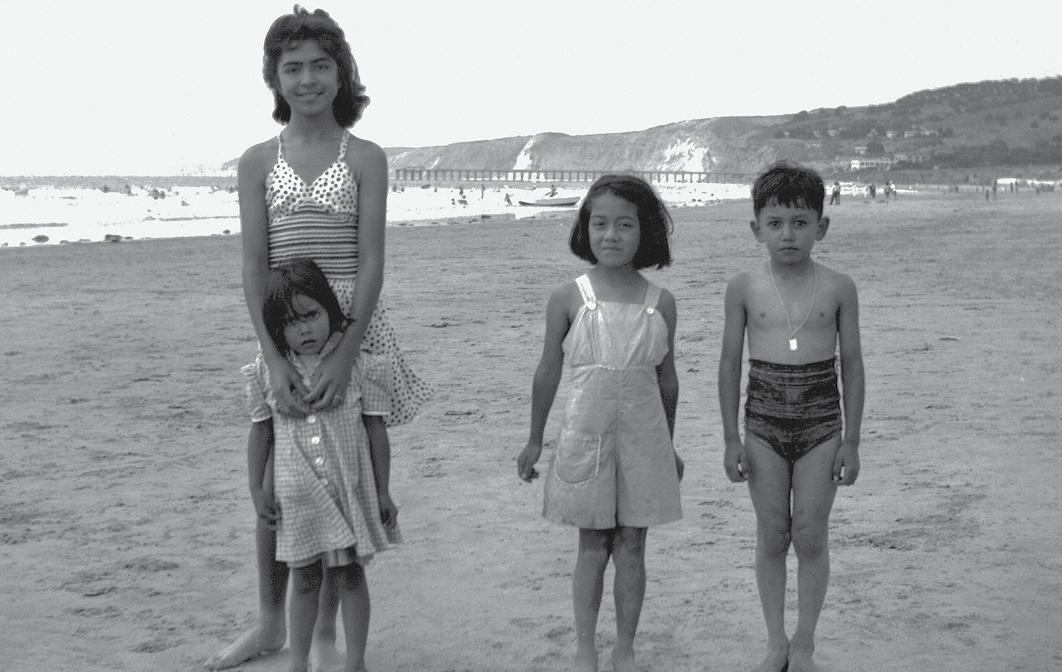
San Diego musician Benny Hollman, 10, with his saxophone in 1950. While attending San Diego High School, Hollman formed the rhythm and blues band “The Velvetones,” which played at dances at the Neighborhood House on National Avenue, American Legion Post 6 in Normal Heights, the Linda Vista Recreation Center, and the National City Armory. He was best known in San Diego for leading his Big Band Explosion at Chargers home games.
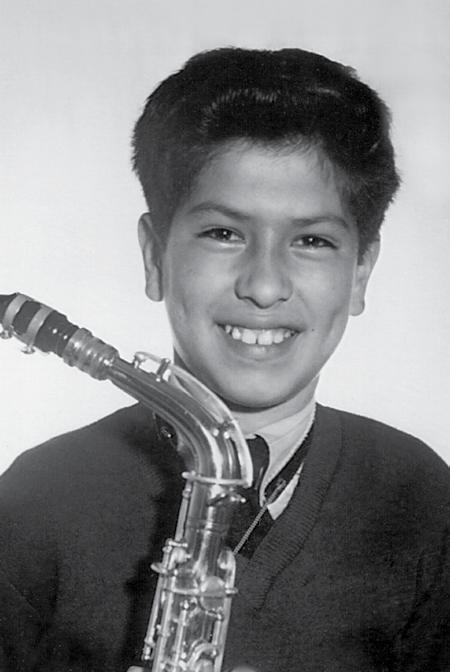 DOROTHY HOLLMAN
DOROTHY HOLLMAN
COMMUNITY MEMORIES 165























 SAN
SAN



 Gladys Welch (left) and Kay Kissinger pose on a San Diego fireboat water pump at the Harbor Days festival in August 1952.
PHOTO BY STANLEY GRIFFIN
Gladys Welch (left) and Kay Kissinger pose on a San Diego fireboat water pump at the Harbor Days festival in August 1952.
PHOTO BY STANLEY GRIFFIN














 CONNIE ZUNIGA
CONNIE ZUNIGA

 CONNIE ZUNIGA
CONNIE ZUNIGA
 CONNIE ZUNIGA
CONNIE ZUNIGA



 DOROTHY HOLLMAN
DOROTHY HOLLMAN